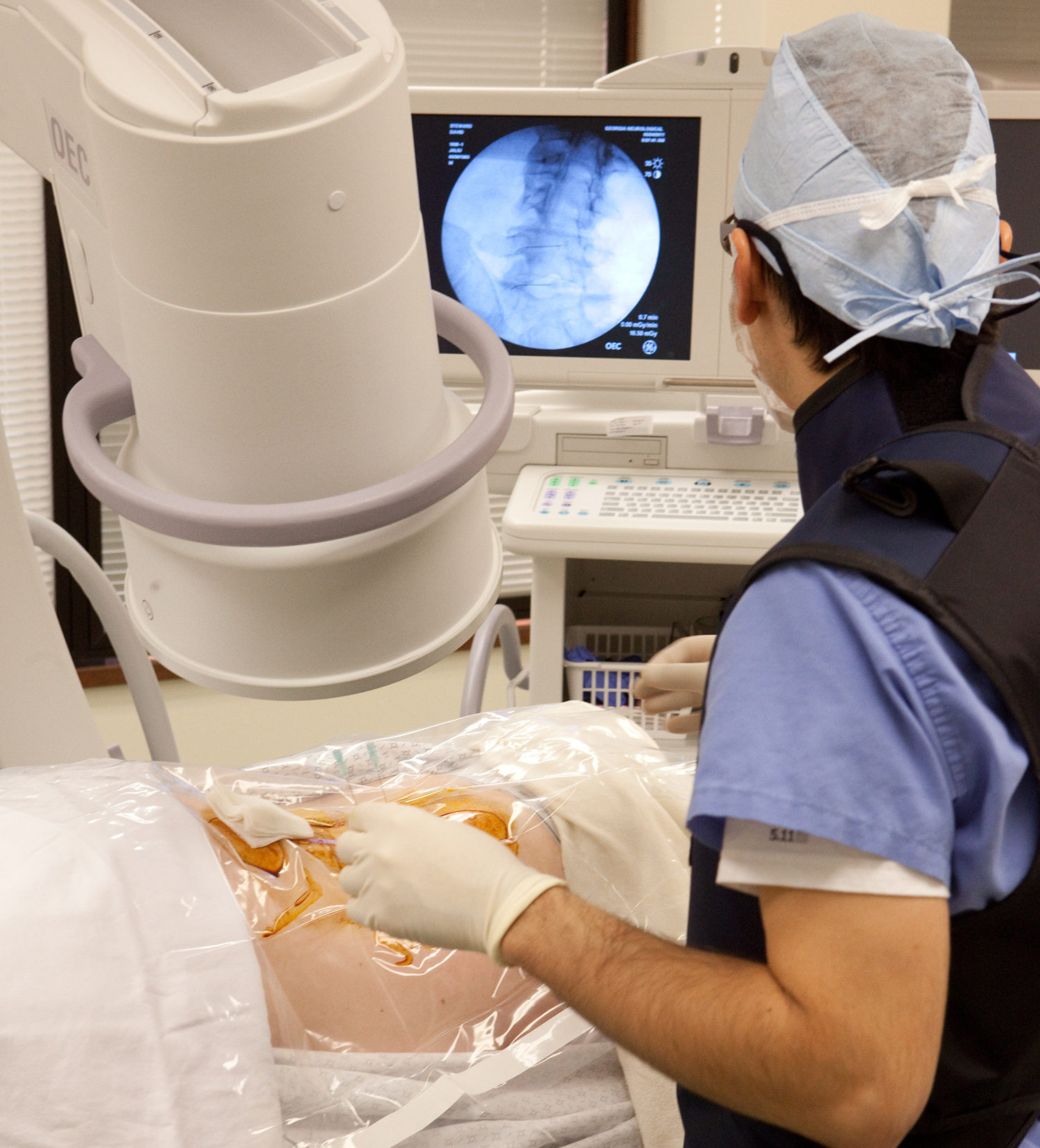Treatment
Injection Therapy
Overview
Spinal injections are intended to provide the patient with enough pain relief to bridge from inactivity to physical therapy, where back problems can be better treated with special exercises.
 For decades, orthopedic surgeons have used the injection of pain medication to relieve pain and inflammation in arthritic joints and restore movement. Similarly, a physical medicine and rehabilitation physician can inject pain medication around the nerve root to relieve pain and inflammation. This is done in a room with a C-arm that provides active images of the inside of the body to help the specialist precisely guide the needle to the exact level of the spine where there is a herniated disc.
For decades, orthopedic surgeons have used the injection of pain medication to relieve pain and inflammation in arthritic joints and restore movement. Similarly, a physical medicine and rehabilitation physician can inject pain medication around the nerve root to relieve pain and inflammation. This is done in a room with a C-arm that provides active images of the inside of the body to help the specialist precisely guide the needle to the exact level of the spine where there is a herniated disc.
Epidural Injections
Injections of cortisone reduces the inflammation and swelling of the nerves in the spine which relieves pain and numbness.
Facet Injection
The facet joints act as the hinges in our back, connecting all the vertebral bones in our back. Sometimes these joints can become irritated or they can develop bone spurs which makes movement uncomfortable or painful. To relieve pain symptoms, the specialist injects medication around the facet joints which effectively acts like lubricant on a rusty door hinge.
Trigger Point Injections
Trigger points are painful tissues around muscles. Trigger point injections apply steroid medication into the muscles where pain is occurring. The injection can relieve spasms and pain long enough for the patient to get moving again.
Injections can be both therapeutic AND diagnostic
The use of injection therapy accomplishes two very important functions.
- THERAPEUTIC FUNCTION: The first purpose of the spinal injection is to provide a therapeutic benefit to the patient, that is, relief of pain symptoms, or relief of the weakness or numbness in the leg or arm caused by a herniated disc.
- DIAGNOSTIC FUNCTION: The second function is to reveal important diagnostic information to the spine specialist AND spine surgeon. For instance, if the injection of medication near the nerve root at a certain level of the spine FAILS TO RELIEVE the pain symptom or the weakness, the spine surgeon learns something very important. One possibility is that the symptoms are coming from a different disc at a different level. This is key, because without this information, a surgeon could operate and remove disc tissue at a level that appears on an MRI to have a herniation, but in fact that herniation is NOT the cause of the patient’s symptoms.
Consequently, having a spinal injection can be a key to a successful spine surgery.
